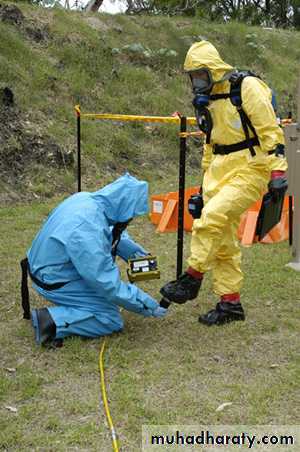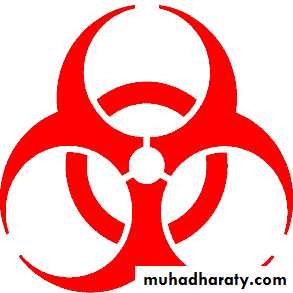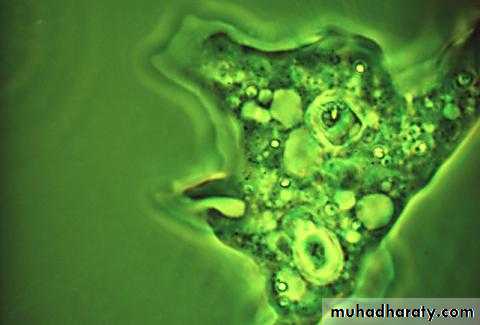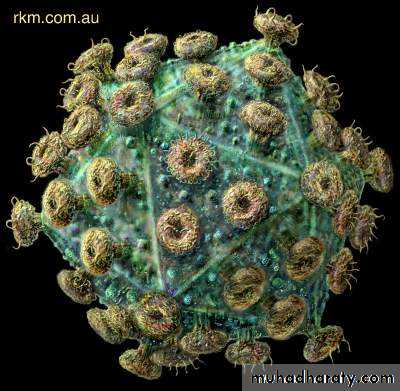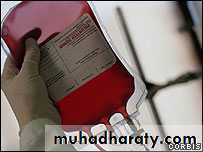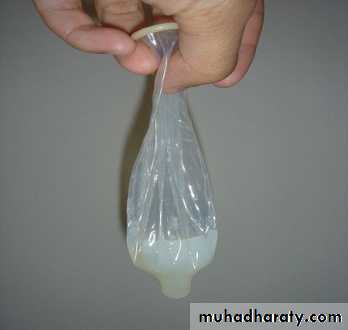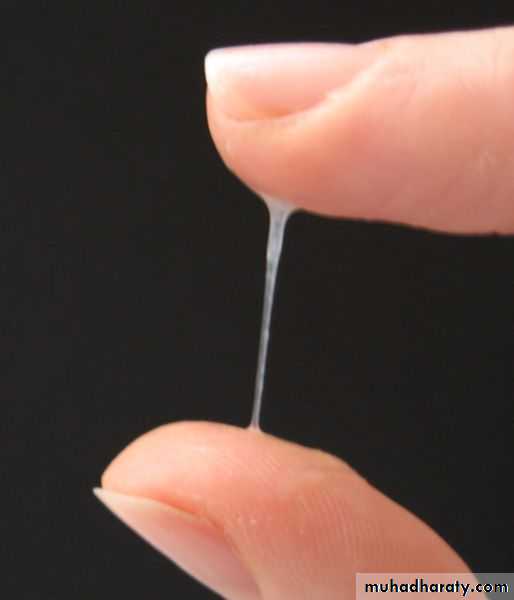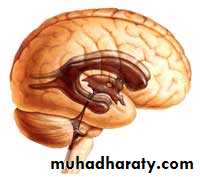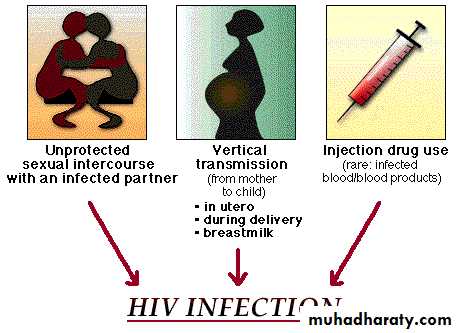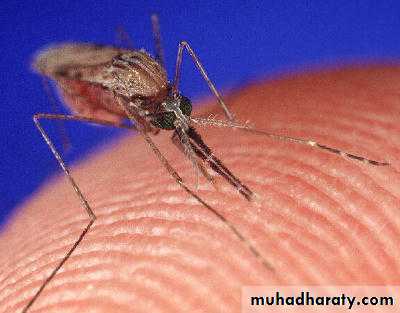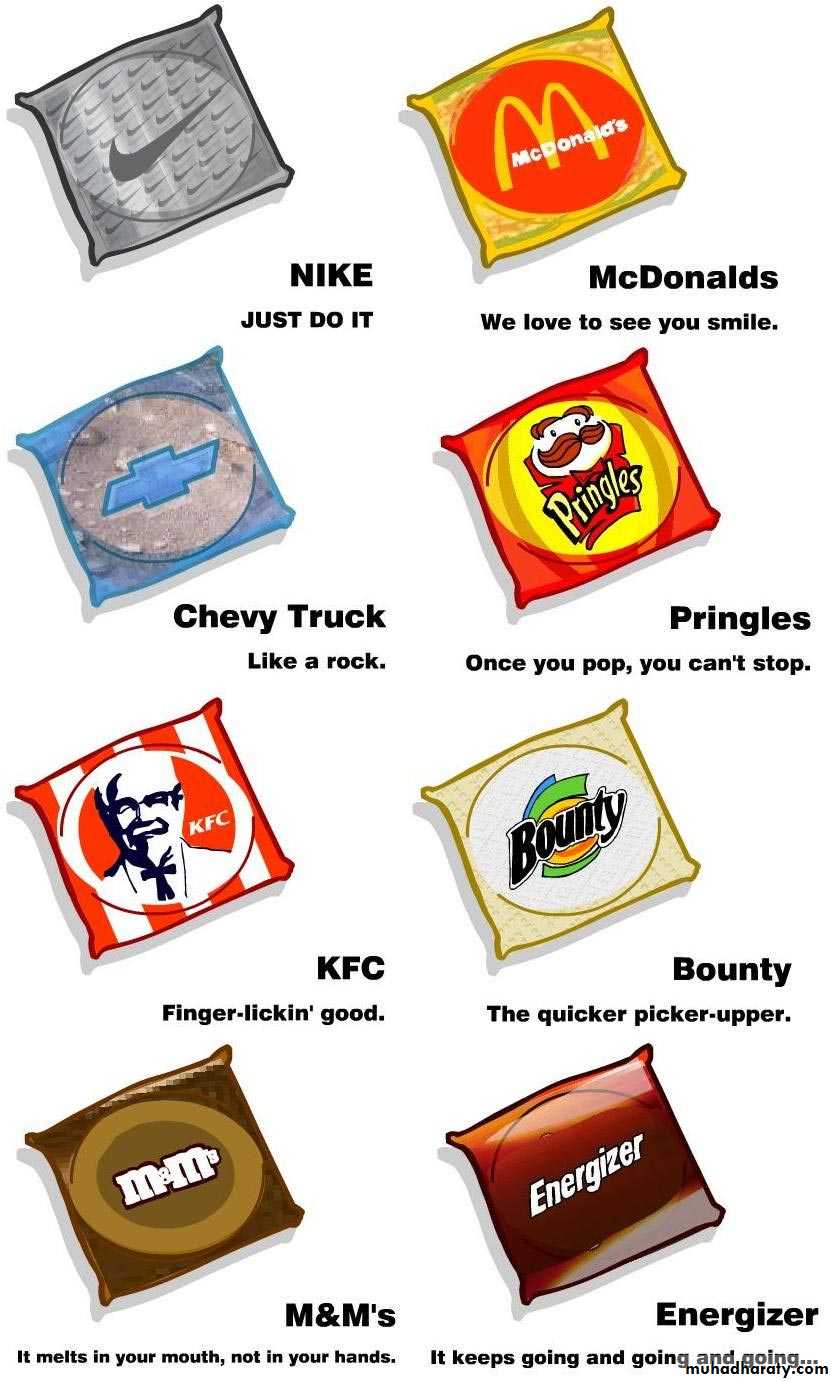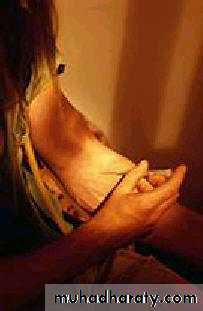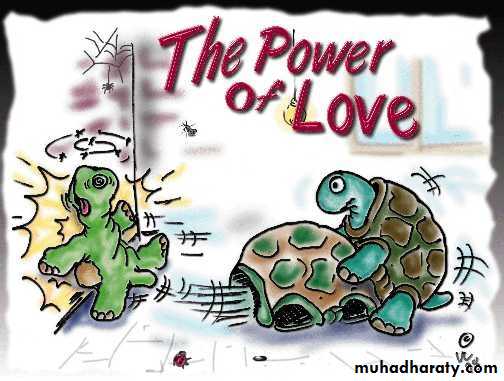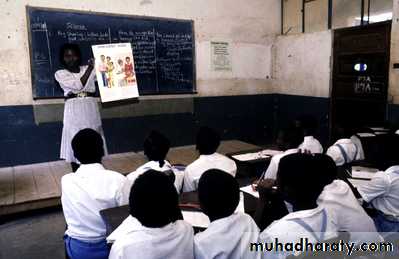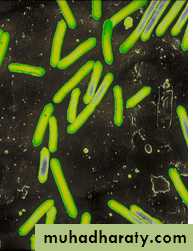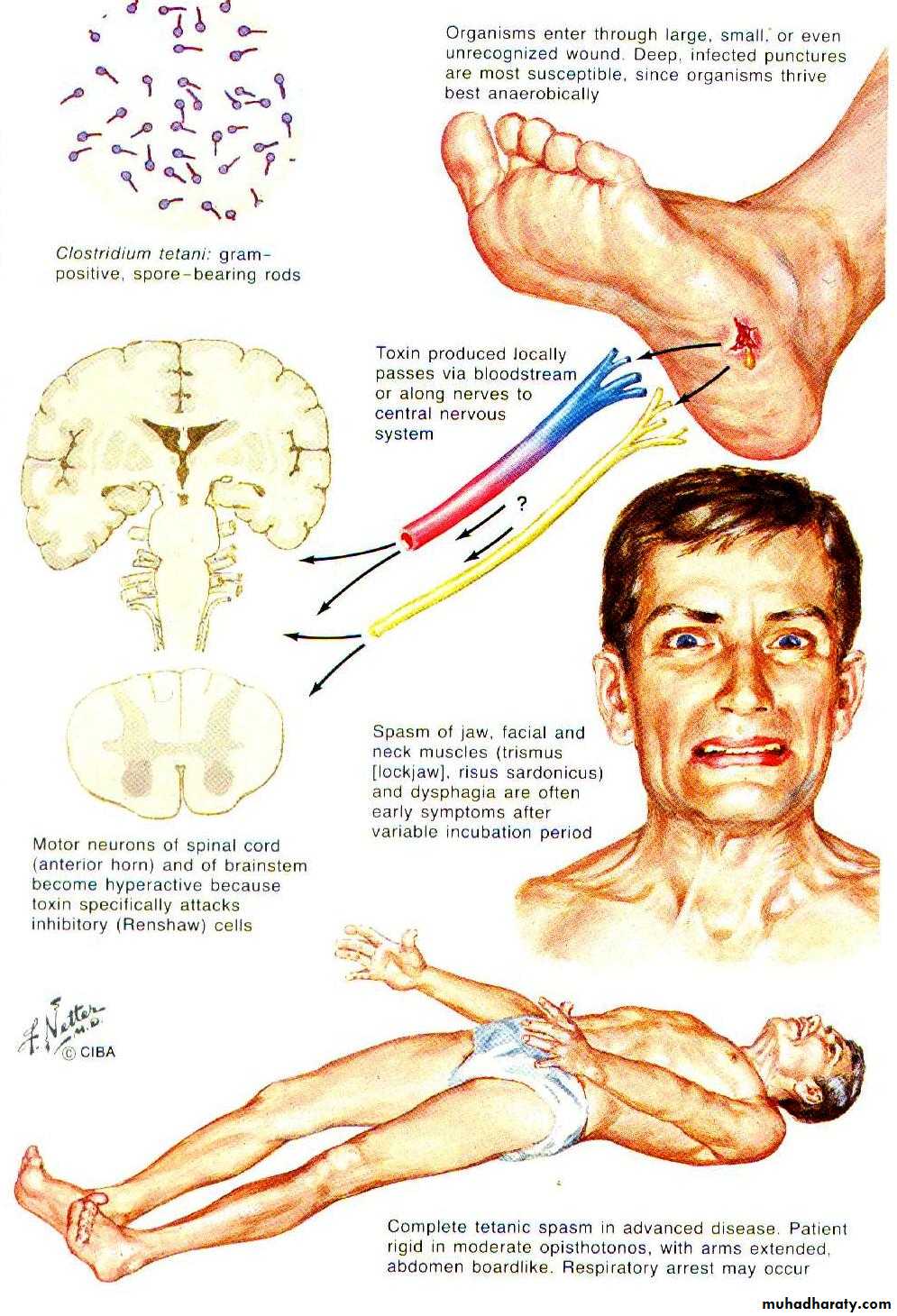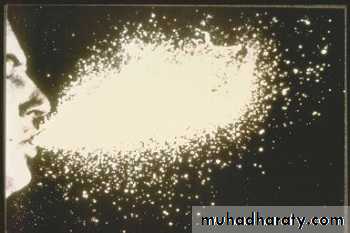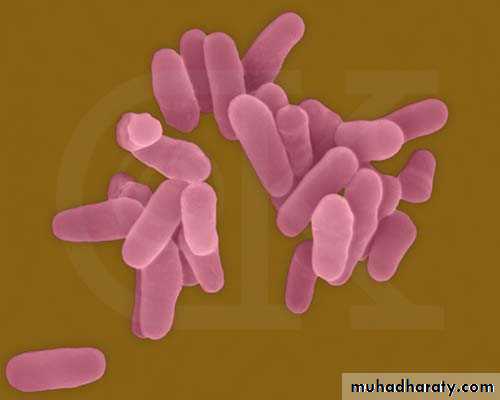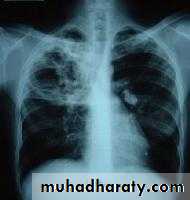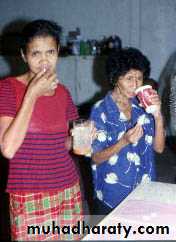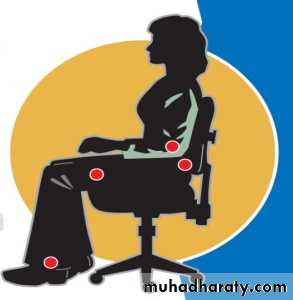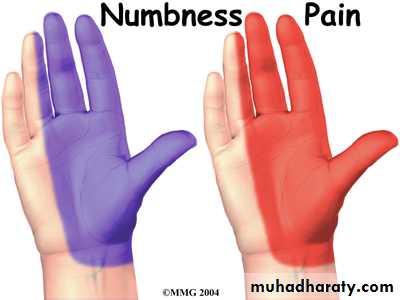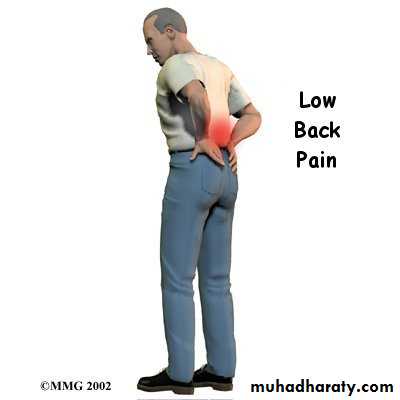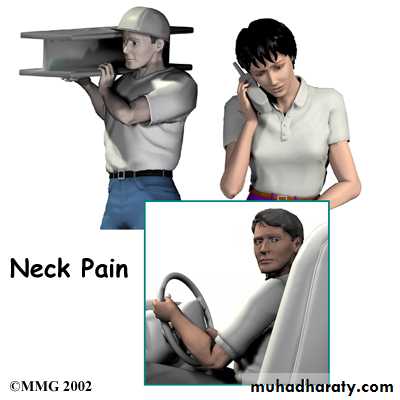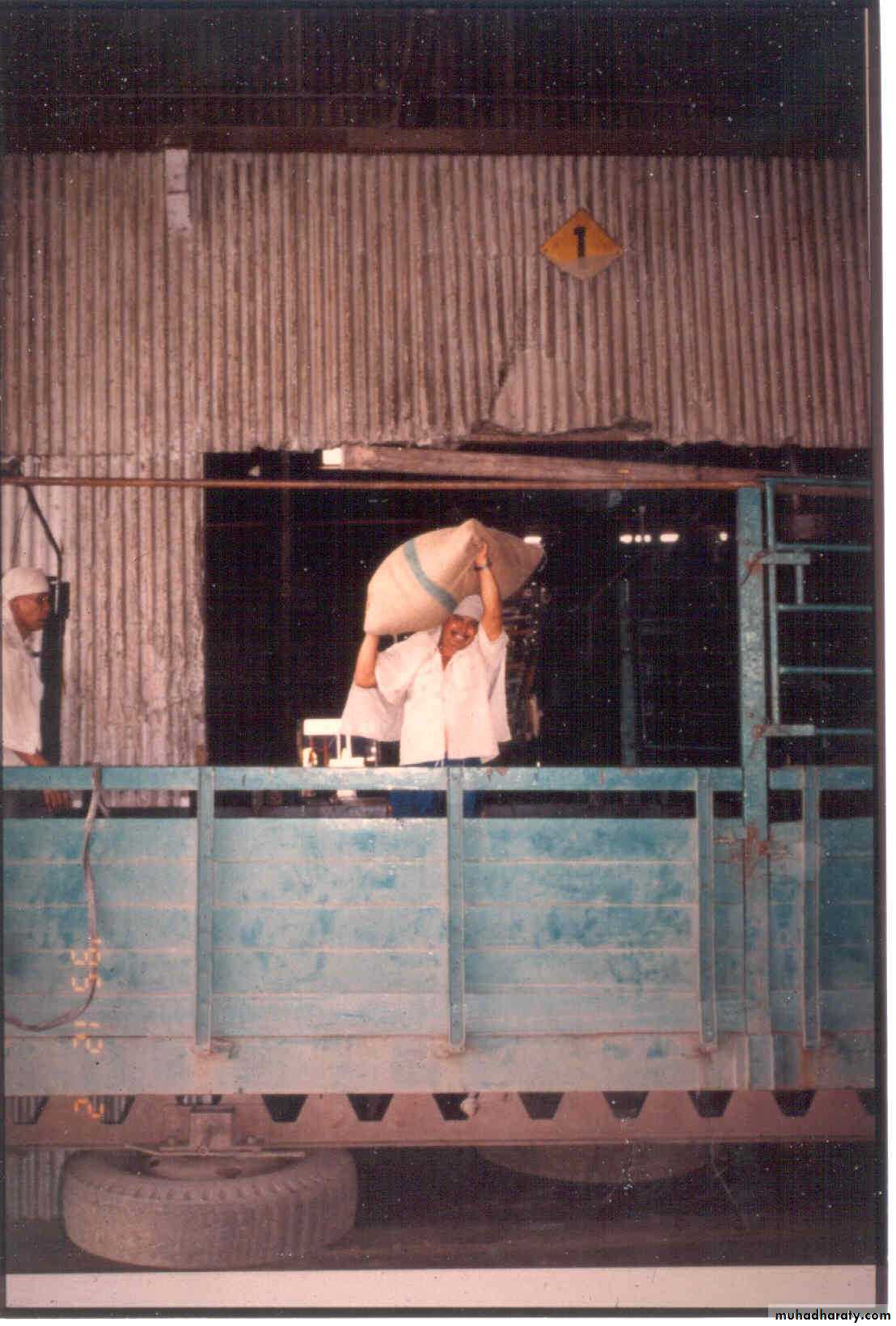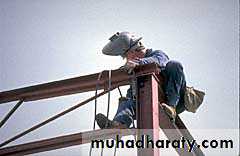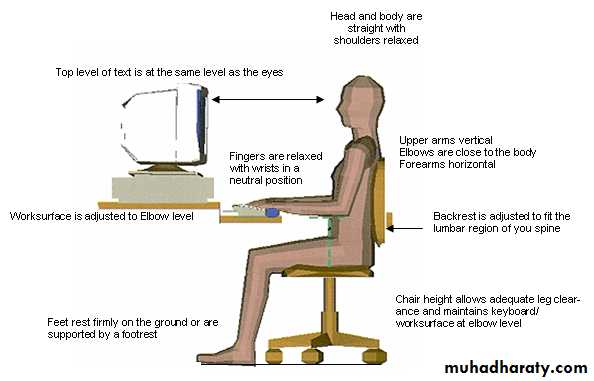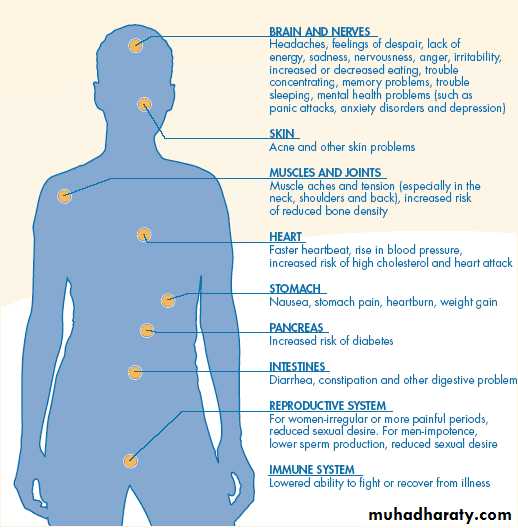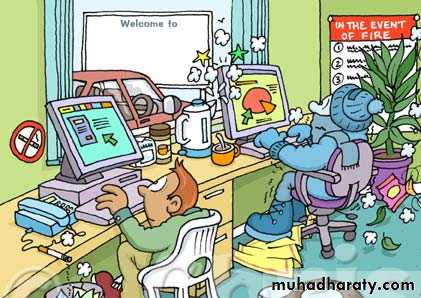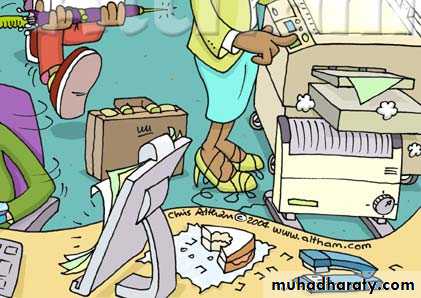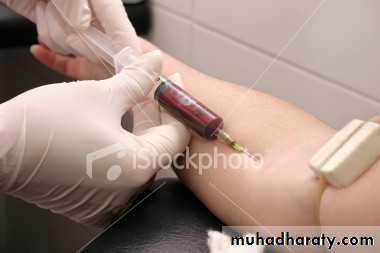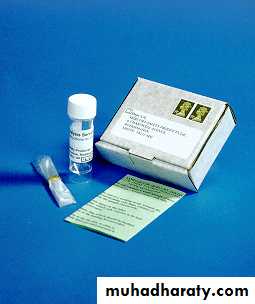OCCUPATIONAL HEALTH HAZARDS
M .ALBAYATYBOSH Training 2009 OSHC
BOSH Training 2009 OSHC
CHEMICAL HAZARDPHYSICAL HAZARD
BIOLOGICAL HAZARD
ERGONOMIC HAZARD
BOSH Training 2009 OSHC
OBJECTIVES:Discuss and explain common hazards in the workplace and their effects to workers’ health.
Recommend appropriate measures to prevent occupational and work-related illnesses.
BOSH Training 2009 OSHCOCCUPATIONAL HEALTH ( ILO/WHO )
Promote and maintain the highest degree of physical, mental & social well-being of workers of all occupations
Prevent workers from departures due to health caused by their working conditions
Protect workers in their working environment from hazards and risks usually causing adverse health effectsPlace & maintain a worker in an occupational environment adapted to his/her physiological ability
BOSH Training 2009 OSHC
HAZARD AND RISK• HAZARD
• - any source of potential damage, harm or adverse health effects on something or someone under certain conditions at work.
• RISK
• - the chance or probability that a person will be harmed or experience an adverse health effect if exposed to a hazard.
BOSH Training 2009 OSHC
WORKPLACE HAZARDS
• Safety Hazards
• working conditions where harm to the workers is of an immediate and violent nature
• result in broken bones, cuts, bruises, sprains, loss of limbs, etc.
• the harm results in some kind of injury to the worker
• associated with poorly guarded or dangerous equipment and machinery
• Health Hazards
• working conditions which result in an illness
• exposure to dangerous substances or conditions, such as chemicals, gases, dusts, noise etc.
• often, latency between exposure and disease
BOSH Training 2009 OSHC
AgeGender
Race
Medical history
Genetic factors
Lifestyle
Workers’ Susceptibility
Physical properties
Multiplicity of exposure
Magnitude of exposure
Duration of
exposure
Timing of exposure
Workplace Factors
WORK-RELATED DISEASE
BOSH Training 2009 OSHC
CHEMICAL HAZARDSBOSH Training 2009 OSHC
Chemical Hazards• Routes of entry into the body
Inhalation
Ingestion
Skin Contact
BOSH Training 2009 OSHC
Chemical Hazards• Routes of excretion
Gastro-intestinal (feces)
Renal (urine)Respiratory (exhalation)
Skin (sweat, hair, nails)BOSH Training 2009 OSHC
LD 50 - Dose lethal to 50% of test animals
BOSH Training 2009 OSHC
Threshold:
point at which toxicity first appearsoccurs at the point where the body's ability to detoxify or repair toxic injury has been exceeded.
BOSH Training 2009 OSHC
Chemical HazardsMeasures of concentration of toxic substances
Threshold Limit Value (TLV)- average concentration of an airborne substance to which most workers could be safely exposed over an eight-hour working day or forty-hour working week throughout a working lifetime
Maximal Allowable Concentration (MAC)- peak or maximum concentration of an airborne to which most workers could be safely exposed.
BOSH Training 2009 OSHC
Chemical HazardsClassification of Toxic Effects
Local toxicity- occurs at the site of chemical contact
Systemic toxicity- occurs distant from point of contact, may involve many organ systems
Acute toxicity- occurs almost immediately (hours/days) after an exposureChronic toxicity- represents cumulative damage to specific organ systems; occurs many months or years to have recognizable clinical disease
BOSH Training 2009 OSHC
Chemical Hazards• Health Effects
• Renal Diseases
• Respiratory Diseases
• Skin Diseases
• Hematologic Diseases
• Cardiovascular Diseases
• Neurologic Diseases
• Carcinogenic
• Teratogenic
BOSH Training 2009 OSHC
Chemical Hazards• Effects
• Chemical Agent
• Industry/Process
• Renal Diseases: acute/chronic renal failure
• Mercury, cadmium, chloroform
• Battery, chemical industries, pesticide
• Respiratory Diseases:
• Irritation, inflammation
• Solvents, ammonia
• Chemical industries
• Pneumoconiosis
• Inorganic dust
• Mining, construction, sandblasting, coal
• Cancer
• Chromium
• Plating, metal refining
BOSH Training 2009 OSHC
Chemical Hazards• Blood Diseases:
• Anemia
• Lead
• Battery mfg., lead smelting
• Aplastic anemia
• Benzene
• Solvent & soap mfg.
• Skin Diseases:
• Allergic/contact
• dermatitis
• Plastic epoxides
• Plastic, varnish
• Acne
• Cutting oils, grease
• Machine-tool operators
• Skin Cancer
• Arsenic, tar
• Petroleum refinery
BOSH Training 2009 OSHC
Chemical Hazards
• Liver Disease:
• Acute liver toxicity
• Carbon tetrachloride
• Cleaning fluids, dry cleaners
• Liver cancer
• Vinyl chloride
• Plastics & vinyl chloride mfg.
• Cardiovascular Disease:
• Hypertension
• Lead, Cadmium
• Battery mfg. & recycling
• Atherosclerosis
• Carbon disulfide
• Degreasing, dry cleaning
• Arrythmias
• Fluorocarbon, trichloroethylene
• Refrigeration, solvent workers
BOSH Training 2009 OSHC
PHYSICAL HAZARDSBOSH Training 2009 OSHC
Physical HazardsNoise
Vibration
Extreme TemperatureIllumination
RadiationBOSH Training 2009 OSHC
NOISEBOSH Training 2009 OSHC
Ear Anatomy
BOSH Training 2009 OSHC
Types of Noise-Induced Hearing LossTemporary Threshold Shift (auditory fatigue)
• temporary loss of hearing acuity after exposure to loud noise• recovery within 16-48 hrs
Permanent Threshold Shift
• irreversible loss of hearing
NOISE
BOSH Training 2009 OSHC
Early Signs of Hearing Loss• Difficulty in understanding spoken words in a noisy environment
• Need to be near or look at the person speaking to help understand words
• Familiar sounds are muffled
• Complaints that people do not speak clearly
• Ringing noises in the ears (tinnitus)
NOISE
BOSH Training 2009 OSHC
• Other Harmful Effects of Noise
• Hypertension
• Hyperacidity
• Palpitations
• Disturbs relaxation and sleep
BOSH Training 2009 OSHC
VIBRATIONBOSH Training 2009 OSHC
Physical factor which affects man by transmission of mechanical energy from oscillating sourcesTypes
Segmental vibrationWhole body vibration
VIBRATION
BOSH Training 2009 OSHC• Health Effects:
• Hand Arm Vibration Syndrome (HAVS)
• tingling, numbness, blanching of fingers
• pain
Segmental Vibration:
BOSH Training 2009 OSHCHealth effects:
Fatigue
Irritability
Headache
Disorders of the spine
Whole Body Vibration:
BOSH Training 2009 OSHCEXTREME
TEMPERATURE
BOSH Training 2009 OSHC
EXTREME TEMPERATURESources of heat stress:
Natural ConditionsHot work processes related to furnaces, kilns, boilers and smelting
BOSH Training 2009 OSHC
Health Effects of Heat Stress• Disorders
• Clinical features
• Prickly Heat (Miliaria rubra)
• Pruritic rash
• Heat cramps
• Cramps in the body, usually legs
• Heat exhaustion
• Dizziness, fainting attack, blurring of vision, cold, clammy and sweaty skin
• Heat stroke
• Cyanosis, muscle twitchings, disorientation, delirium, convulsions
BOSH Training 2009 OSHC
EXTREME TEMPERATURE
Sources of Cold Environment:
Ice plants and freezers in the food industryBOSH Training 2009 OSHC
Frostbite: reddening of skin, localized burning pain and numbness. Fingers, toes, cheeks, nose, ears are most susceptible.• trench foot or immersion foot: numbness, pain, cramps, ulceration and gangrene.
• Health Effects of Cold Temperature
BOSH Training 2009 OSHC
INADEQUATEILLUMINATION
BOSH Training 2009 OSHC
• Area of Operation• Min Lighting Level (lux)
• Cutting Cloth
• Fine machining
• 2000
• Transcribing handwriting
• Drafting
• 1000
• Welding
• First Aid station
• 500
• Lunch Room
• Rest Room
• 300
Recommended Illumination Levels
ILLUMINATION
BOSH Training 2009 OSHC
Health Effects
Visual Fatigue
Double Vision
Headaches
Painful irritation
Lacrimation
Conjunctivitis
Inadequate Illumination
BOSH Training 2009 OSHC
RADIATIONBOSH Training 2009 OSHC
0
102
104
106
108
1010
1012
10141016
10181020
X-rays, about1 billion
billion Hz
can penetrate
the body and damage
internal organs and tissues
by damaging important
molecules like DNA.
This is called “ionization.”
Microwaves, several billion Hz,
can have “thermal” or hearing
effects on body tissues
Power frequency EMFs 50 or
60 Hz carry very little energy,
have no ionizing effects
and usually no thermal
effects. They can, however,
cause very weak electric
currents to flow in the body.
Gamma rays
X-raysUltraviolet radiation
IONIZING RADIATION
Visible light
Infrared radiationMicrowaves
Radio waves
1022
Very low frequency (VLF)
3,000 - 30,000 Hz
Extremely low frequency
(ELF) 3 - 3,000 Hz
Direct current
60 Hz
15 - 30 Hz &
50 - 90 Hz800 - 900 MHz
Source
Frequency in hertz (Hz)
Electromagnetic Spectrum
BOSH Training 2009 OSHC
RADIATION• Types
• Sources
• Health Effects
• Ionizing
• X-rays
• Gamma rays
• Cancer, congenital defects, death
• Non-ionizing
• Ultraviolet
• Infrared
• Laser
• skin redness, premature skin ageing, and skin cancer
• corneal and conjunctival burns, retinal injury, cataract
• Skin and eye problem
BOSH Training 2009 OSHC
BIOLOGICAL HAZARDS
BOSH Training 2009 OSHC
VIRUSESFUNGI
BACTERIA
PARASITES
BIOLOGICAL HAZARDS
BOSH Training 2009 OSHCSelected Infectious Diseases and Occupations
• Agent / Disease
• Occupation
• Colds, influenza, scarlet fever, diphtheria, smallpox
• May be contracted anywhere
• Tuberculosis
• Silica workers, people exposed to heat and organic dusts, and medical personnel
• Anthrax
• Animal handlers and handlers of carcasses, skins, hides, or hair of infected animals, including wool carpet processors and handlers.
BOSH Training 2009 OSHC
Selected Infectious Diseases and Occupations• Agent / Disease
• Occupation
• Ringworm (in horses, cattle, deer, pigs, cats, dogs, birds)
• Pet shop salesmen, stockmen, breeders of cats and dogs, and other animal handlers
• Tetanus
• Farmers (spores in soil) or anyone in contact with manure.
BOSH Training 2009 OSHC
Selected Infectious Diseases and Occupations
• Agent / Disease
• Occupation
• Psittacosis (in parrots, parakeets, pigeons, ducks, turkeys, chickens, etc.)
• Pet shop personnel, gardeners, housewives, veterinary surgeons, and researchers.
• Hookworm
• Miners, agricultural laborers, planters of sugar, tobacco, tea, rice and cotton, and brick and tunnel workers.
BOSH Training 2009 OSHC
Selected Infectious Diseases and Occupations• Agent / Disease
• Occupation
• Rabies (e.g. dogs, bats, rats, pigs, cats)
• Veterinarians, letter carriers, laboratory research workers, agricultural workers.
• Fungus
• Farmers, outdoor workers, animal handlers
BOSH Training 2009 OSHC
HIV and AIDSA- Acquired
I- Immune
D- Deficiency
S- Syndromeserious and usually fatal condition in which the body’s immune system is severely weakened and cannot fight off infection.
• H- Human
• I- Immunodeficiency
• V- Virus
• virus which causes AIDS
BOSH Training 2009 OSHC
Epidemiology of HIV and AIDS• Demographic Data
• Feb 2009
• Jan – Feb 2009
• Cumulative Data 1984 – 2009
• Total Reported Cases
• 47
• 112
• 3,701
• Asymptomatic Cases
• 45
• 107
• 2,893
• AIDS Cases
• 2
• 5
• 808
• Males
• 38
• 95
• 2,595*
• Females
• 9
• 17
• 1,095*
• Youth 15-24 y/o
• 12
• 31
• 537
• Children <15 y/o
• 1
• 2
• 52
• Reported deaths due to AIDS
• 0
• 0
• 317
Source: HIV / AIDS Registry, Department of Health, Philippines * Note: No data available on sex for eleven (11) cases.
BOSH Training 2009 OSHC
Modes of HIV Transmission
• Reported Mode of
• Transmission
• Feb
• 2009
• n=47
• Jan-Feb
• 2009
• n= 112
• Cumulative Data:
• 1984—2009
• N=3,701
• Sexual Contact
• 43
• 107
• 3,297
• Heterosexual contact
• 13
• 36
• 2,034 (62%)
• Homosexual contact
• 14
• 37
• 872 (26%)
• Bisexual contact
• 16
• 34
• 391 (12%)
• Blood / Blood Products
• 0
• 0
• 19
• Injecting Drug Use
• 0
• 1
• 8
• Needle Prick Injury
• 0
• 0
• 3
• Mother-to-Child
• 1
• 2
• 49
• No data available
• 3
• 3
• 325
BOSH Training 2009 OSHC
Body Fluids with High Viral Load
Blood
Semen
Vaginal and cervical mucus
Breastmilk
Amniotic fluid
Cerebrospinal fluid
BOSH Training 2009 OSHC
Modes of TransmissionUnprotected penetrative sex
• semen, blood, vaginal secretions
Blood transfusion on infected blood and blood products
Sharing needles among
I.V. drug users
Vertical/perinatal
• mother to infant
Breastfeeding
BOSH Training 2009 OSHC
HIV is NOT transmitted…through casual contact in any setting– schools, homes, hospitals
through insect, food, water, clothes, toilets, swimming pools, and drinking and eating utensils
BOSH Training 2009 OSHC
Prevention of HIV InfectionREMEMBER ABCDE!
• Abstinence
• Be Faithful
• Condom
• Do not inject Drugs/no sharing of needles
• Education
BOSH Training 2009 OSHC
TETANUSA neurological disorder characterized by increased muscle tone and spasms, that is caused by tetanospasmin, a protein toxin elaborated by the organism Clostridium tetani.
It arises from the contamination of wounds with Clostridium spores.
BOSH Training 2009 OSHC
TETANUSClinical Manifestations
• Increased tone in the masseter muscle (lockjaw)
• Sustained contraction of the facial muscles (risus sardonicus) and back muscles (opisthotonus)
Prevention
• Active immunization with tetanus toxoid• Careful wound management
BOSH Training 2009 OSHC
TUBERCULOSIScaused by the bacteria, Mycobacterium tuberculosis
caused by droplet nuclei released when sneezing and coughing
Symptoms: weight loss, low grade afternoon fever, persistent cough and sometimes, blood-streaked expectoration or hemoptysis
BOSH Training 2009 OSHC
Ten Leading Causes of Death by Sex Number, Rate/100,000 Population & Percentage, Philippines, 2004• Cause
• Male
• Female
• Both Sexes
• No.
• Rate
• Percent*
• 1. Heart Diseases
• 40,361
• 30,500
• 70,861
• 84.8
• 17.6
• 2. Vascular System Diseases
• 28,930
• 22,750
• 51,680
• 61.8
• 12.8
• 3. Malignant Neoplasm
• 21,395
• 19,129
• 40,524
• 48.5
• 10.1
• 4. Accidents**
• 28,041
• 6,442
• 34,483
• 41.3
• 8.6
• 5. Pneumonia
• 15,822
• 16,276
• 32,098
• 38.4
• 8.0
• 6. Tuberculosis, all forms
• 17,841
• 8,029
• 25,870
• 31.0
• 6.4
• 7. Ill-defined and unknown causes of mortality
• 10,941
• 10,362
• 21,278
• 25.5
• 5.3
• 8. Chronic lower respiratory diseases
• 13,084
• 5,891
• 18,975
• 22.7
• 4.7
• 9. Diabetes Mellitus
• 7,970
• 8,582
• 16,552
• 19.8
• 4.1
• 10. Certain conditions from perinatal period
• 7,809
• 5,371
• 13,180
• 15.8
• 3.6
Source: 2004 Philippine Health Statistics, Last Update: February 11, 2008
* percent share from total deaths, all causes, Philippines ** External Causes of Mortality
BOSH Training 2009 OSHC
With DOTS
90% CURE RATEDOTS Strategy…the Solution!Directly Observed Therapy Short Course
BOSH Training 2009 OSHC
ERGONOMIC HAZARDSBOSH Training 2009 OSHC
ERGONOMICSHuman Biological Science
+
Engineering Science
____________________________________
• “ fitting the job to the worker”
• MAXIMUM SATISFACTION AND INCREASE PRODUCTIVITY
BOSH Training 2009 OSHC
the
tool
the
workstation
the task
(job content & context)
the
organization
the
environment
ERGONOMICS
BOSH Training 2009 OSHCGoal
to reduce work-related musculoskeletal disorders (MSDs) developed by workers
MSDs are injuries and illnesses that affect muscles, nerves, tendons, ligaments, joints or spinal discs.
ERGONOMICS
BOSH Training 2009 OSHC
Painful joints
Pain, tingling, numbness in hands, wrists, forearms, shoulders, knees and feet
Shooting or stubbing pains
Swelling or inflammation
Common Symptoms of MSDs
ERGONOMICSBOSH Training 2009 OSHC
Fingers or toes turning whiteBack or neck pain
Stiffness
Common Symptoms of MSDs
ERGONOMICSBOSH Training 2009 OSHC
Static posture
Risk Factor: ERGONOMICSBOSH Training 2009 OSHC
Forceful exertion
Risk Factor: ERGONOMICSBOSH Training 2009 OSHC
Risk Factor: ERGONOMICSRepetitive movement
BOSH Training 2009 OSHCRisk Factor: ERGONOMICS
Extreme range of motion
BOSH Training 2009 OSHC
Risk Factor: ERGONOMICSAwkward posture
BOSH Training 2009 OSHCERGONOMICS
BOSH Training 2009 OSHC
STRESSBOSH Training 2009 OSHC
STRESSThe harmful physical and emotional responses that occurs when the requirements of the job do not match the capabilities, resources or needs of the worker.
BOSH Training 2009 OSHC
STRESS: EffectsBOSH Training 2009 OSHC
Manifestations of StressPHYSIOLOGICAL
Heart rate
Blood pressure
Indigestion
BEHAVIORAL
Drug useAlcohol intake
Heavy smoking
Impulsive emotional
behavior
Poor work & family
relationship
Social isolation
Family abandonment
Sleep problems
• PSYCHOLOGICAL
• Fatigue
• Anxiety
• Tension
• Irritability
• Depression
• Boredom
• Inability to concentrate
• Low esteem
STRESS
BOSH Training 2009 OSHC
BOSH Training 2009 OSHC
MONITORINGSystematic, continuous, repetitive health-related activities that should lead to corrective action
Types of monitoring
1. Ambient / Environmental2. Biological
3. Medical Surveillance
BOSH Training 2009 OSHC
BIOLOGICAL MONITORINGBOSH Training 2009 OSHC
Biological MonitoringMeasurement of a substance, its metabolites or its effects in body tissues, fluids or exhaled air of exposed person
Assess exposure and health risk of workers
Complements exposure assessment by air samplingBOSH Training 2009 OSHC
Biological Monitoring• Chemical /
• Determinant
• Sampling Time
• BEI
• LEAD
• Lead in Blood
• Not critical
• 30ug/100ml
• MERCURY
• Total inorganic in urine
• Total inorganic in blood
• Prior to shift
• End of shift at end of workweek
• 35ug/g
• 15ug/L
• CARBON MONOXIDE
• Carboxyhemoglobin in blood
• End of shift
• 3.5% of Hgb
BOSH Training 2009 OSHC
MEDICAL SURVEILLANCE
BOSH Training 2009 OSHC
Medical SurveillanceIdentify cases
Analyze Trends and Patterns in the Workforce to Guide Prevention Efforts
Meet Regulatory Requirements
BOSH Training 2009 OSHC
Know the hazard - How worker is exposed- How worker is affected
Characterize the hazard - Exposure levels
- Exposure durationKnow the worker - Susceptibilities
Obtain information on - Directed towards specificmedical examinations organ system
Analyze Medical Data - Disease, recovery, rehab
- Effectiveness or failure of
control measures
Medical Surveillance
BOSH Training 2009 OSHC
Environmental monitoringBiological monitoring and surveillance
Treatment and surveillance- Morbidity
- Mortality
Workplace-Related Events
Exposure at the workplace
- Chemicals
- Physical agents
Biologically significant exposure
- Chemicals absorbed
- Early (reversible) changes
None
Early
LateClinical diagnosis
- measurable health effects
• End effects
• - diseases
• - unfavorable events (spontaneous abortion)
Monitoring Activity
Health EffectsPREVENTION AND CONTROL OF OCCUPATIONAL HAZARDS
BOSH Training 2009 OSHCStandards, Policies and Guidelines
Occupational Safety and Health Standards
Rule 1050
Notification and Keeping of Records of Accidents and/or Occupational illnesses
Rule 1070
Occupational Health and Environmental Control
Rule 1960
Occupational Health ServicesBOSH Training 2009 OSHC
Rule 1960:Occupational Health Services1. Every employer shall establish in his place of employment occupational health services in accordance with the regulation and guidelines provided for under this rule.
2. The employer, workers, and their representatives, where they exist, shall cooperate and participate in the implementation of the organizational and other measures relating to occupational health services.
1961: General Provisions
BOSH Training 2009 OSHC
Rule 1960:Occupational Health Services1963.01: Medicines and Facilities
1963.02: Emergency Medical and Dental Services
1963: Emergency Health ServicesBOSH Training 2009 OSHC
Rule 1960:Occupational Health Services
Hazardous Workplaces:
• Number of workers
• OH Physician
• OH Dentist
• OH Nurse
• First Aider
• 1 – 50
• 1 Full time
• 51 - 99
• 1 Part time
• 4 hours/day 6x/week
• 1 Full time
• 100 – 199
• 1 Part time
• 4hrs/day 3x/week *
• 1 Part time
• 4hrs/day 3x/week *
• 1 Full time
• 1 Full time
• 200 - 600
• 1 Part time
• 4hrs/day 6x/week **
• 1 Part time
• 4hrs/day 6x/week **
• 1 Full time
• 1 Full time
• 601 - 2000
• 1 Full time or
• 2 Part Time
• 4hrs/day 6x/week
• 1 Full time
• 1 Full time every shift
• 1 Full time every shift
• 2000 and more
• 1 Full time
• 1 Part time
• 4hrs/day 6x/week
• 1 Full time
• 1 Full time every shift
• 1 Full time every shift
*Alternate each day
** Alternate workshift in a day
BOSH Training 2009 OSHC
Rule 1960:Occupational Health Services
Non - Hazardous Workplaces:
• Number of workers
• OH Physician
• OH Dentist
• OH Nurse
• First Aider
• 1 - 99
• 1 Full time
• 100 – 199
• 1 Part time
• 4hrs/day 6x/week
• 1 Full time
• 200 - 600
• 1 Part time
• 4hrs/day 3x/week *
• 1 Part time
• 4hrs/day 3x/week *
• 1 Full time
• 1 Full time
• 601 - 2000
• 1 Part time
• 4hrs/day 6x/week **
• 1 Part time
• 4hrs/day 6x/week **
• 1 Full time every shift
• 1 Full time every shift
• 2000 and more
• 1 Full time
• 1 Part time
• 4hrs/day 6x/week
• 1 Full time
• 1 Full time every shift
• 1 Full time every shift
*Alternate each day
** Alternate workshift in a day
BOSH Training 2009 OSHC
Rule 1960:Occupational Health Services
An employer may not establish an emergency hospital or dental clinic in his workplace as required in these regulations where there is a hospital or dental clinic which is located not more than five (5) kilometers away from the workplace, if situated in any urban area, or which can be reached in twenty-five (25) minutes of travel, if situated in rural area, and the employer has facilities readily available for transporting workers to the hospital or dental clinic in case of emergency.
1963.03: Emergency Hospital
BOSH Training 2009 OSHC
Rule 1960:Occupational Health ServicesHealth Examinations:
Entrance
Periodic
Special examination
Transfer examination
Separation examination
BOSH Training 2009 OSHC
OCCUPATIONAL HEALTH PROGRAMSBOSH Training 2009 OSHC
Key Elements of the Occupational Health ProgramHealth Protection
Health Promotion
Health Rehabilitation
BOSH Training 2009 OSHCHealth and Safety Programs
• Hazards/ Disease
• Source
• Health Effect
• Health Program
• Chemical
• Solvents
• Paints, Thinners
• Irritant, Multisystem effects
• Surveillance for chemical exposure
• Exposure monitoring (Biologic Monitoring)
• Physical
• Noise
• Woodwork
• Operations
• Hearing Impairment
• Hearing Conservation Program
BOSH Training 2009 OSHC
Health and Safety Programs
• Hazards/ Disease
• Source
• Health Effect
• Health Program
• Biologic
• Tetanus
• Dirty Nails, soil
• Lockjaw, rigidity, death
• Immunization
• Ergonomic Stresses
• Cumulative Trauma Disorder
• Awkward postures, Heavy loads
• Musculoskeletal Disorders
• Management or personnel methods;
• Workplace modification
• Worker education and training;Back Care Program
BOSH Training 2009 OSHC
Health PromotionPhysical activity, Nutrition, Weight reduction
Immunization
• OSHS, RULE 1960
Smoking cessation
• RA 9211 Tobacco Regulation Act of 2003
HIV/AIDS
• RA 8504 Philippine AIDS Prevention and Control Act of 1998• National Workplace Policy on STD/HIV/AIDS initiated by DOLE - 1997
BOSH Training 2009 OSHC
Health PromotionDrug Abuse Prevention and Control
• RA 9165 Comprehensive Drugs Act of 2002
• Department Order No. 53-03: Guidelines for the Implementation of a Drug-Free Workplace Policy and Program for the Private Sector
Tuberculosis Prevention and Control
• Executive Order No. 187, Instituting a Comprehensive and Unified Policy for Tuberculosis Control in the Philippines (CUP) (March 2003)
• Department Order No. 73-05: Guidelines for the Implementation of Policy and Program on Tuberculosis (TB) Prevention and Control in the Workplace
BOSH Training 2009 OSHC
DEPARTMENT ORDER NO. 56-03• SECTION 2. New Priorities of the Family Welfare Program
• a) Reproductive Health and Responsible Parenthood
• b) Education/Gender Equality
• c) Spirituality or Value Formation
• d) Income Generation/Livelihood/Cooperative
• e) Medical Health Care
• f) Nutrition
• g) Environmental Protection, Hygiene and Sanitation
• h) Sports and Leisure
• i) Housing
• j) Transportation
RATIONALIZING THE IMPLEMENTATION OF THE FAMILY WELFARE PROGRAM (FWP) IN DOLE
BOSH Training 2009 OSHC
Approach in EnsuringWell-Being of Workers
Looking at developmental strategiesInformation
EducationTraining
Campaigns
Good practices
Successful cases
Competitions
Demonstrations
Interventions
Looking at regulatory requirements
Relevant laws, standards, issuances and guidelines
EnforcementImplementation
Inspection
Evaluation
BOSH Training 2009 OSHC
Participatory Approach
Participation and involvement from stakeholders
Coordinated intervention
Learning from
specifications/guidelines,
scientific data
best practice
BOSH Training 2009 OSHC
Benefits to the workersEnhanced worker motivation and job satisfaction
Added problem-solving capacity
Greater acceptance of change
Greater knowledge of work and organization
Reduces the extent and severity of work related injuries and illnesses
Improves employee morale and productivity
Reduces workers’ compensation costs
BOSH Training 2009 OSHC
THANK YOU FOR YOUR ATTENTION!“I still need more healthy rest in order to work at my best. My health is the main capital I have and I want to administer it intelligently.”
---Ernest Hemmingway
Nobel Prize winner for literature











































